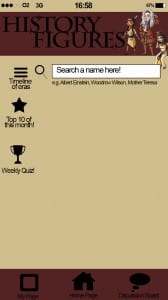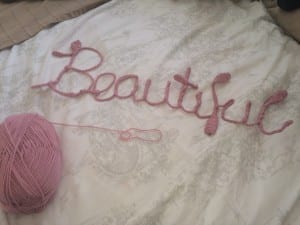I worked on my feedback and made the following changes;
1) I edited the comet on my Timeline Page.
2) Made the app able to zoom in so the text can be read more clearly
I worked on my feedback and made the following changes;
1) I edited the comet on my Timeline Page.
2) Made the app able to zoom in so the text can be read more clearly
So I showed Mike and the group my work and found the feedback very positive and useful;
I started by creating the ‘home page’ for my app. I used the apps on my own phone for inspiration and imitated the layout. I created the signal circles, digital clock and battery along the top to make the app look more realistic for a mobile.
 The title “History Figures” is written in ‘Charlemagne Std Bold’ as the spikey serifs with the clean lines looks like a late twentieth century font which links to the historical factor of the app.
The title “History Figures” is written in ‘Charlemagne Std Bold’ as the spikey serifs with the clean lines looks like a late twentieth century font which links to the historical factor of the app.
My choice in colours, stone, maroon and black, I feel connote an ‘old, history’ appeal, effective most when minimally used.
The cartoon characters of Pocahontas, Issac Newton and Cleopatra add an appealing factor for a possible younger audience. I got this idea from watching the children’s TV show ‘Horrible Histories’.
After feedback and advise on what to fill my homepage with, I have decided to fill the middle with pictures of historical landmarks which, when the app is functioning, will automatically fade into another random picture on a cycle of roughly 20 pictures. Below are three prototypes of what they would look like;
In our workshop this week I had a little catch up with Mike and discussed my typography work so far. The main two outputs of the conversation was;
In response to this feedback I have already begun work on my type. I have bought a thick pink ball of wool which I have began wrapping around my letters tightly. I am already finding my work more visually appealing and the colour and texture of the wool is definitely emphasising each letters structure and format.

I also wanted to work on presenting my text better. I went out to B&Q and purchased a slab of MDF wood which I then painted white. By nailing the type onto the wood it should hopefully give it a more 3D look and the contrast in colours will emphasise the shape of the letters.
So I went ahead with my phrase “beautiful chaos” and started from scratch. For the word ‘beautiful’ I tightly twisted two wires with a drill and a clamp, and bent the wire into the letters. I created this word in a san serif typeface, conjoining each letter to create a flowing and elegant appearance. I then found a white coloured thinner wire and wrapped the type up in the wire.
I tried to measure and be as precise as I could in making sure all letters were the same height and all ascenders and descenders were the same height/length. However I found this hard when bending the wire and therefore the height of the ‘t’ is not as long as the ‘f’ and ‘l’. This is something I would ensure was correct if I was to do this project again. I do really like the white wire wrapped around – it doesn’t show very well on the picture and video however I like how the material used connotes the word well, similar to how onomatopoeia works with words and their sounds.
The ‘H’ and ‘A’ I didn’t measure compared to the other letters and they ended up much larger than the other letters. In some ways I liked this; it reflects the meaning of the word and the structure and consistency of the letters is chaotic and uneven: but I also dislike how they aren’t neatly all the same height and width and can be used repeatedly as an actual typeface.